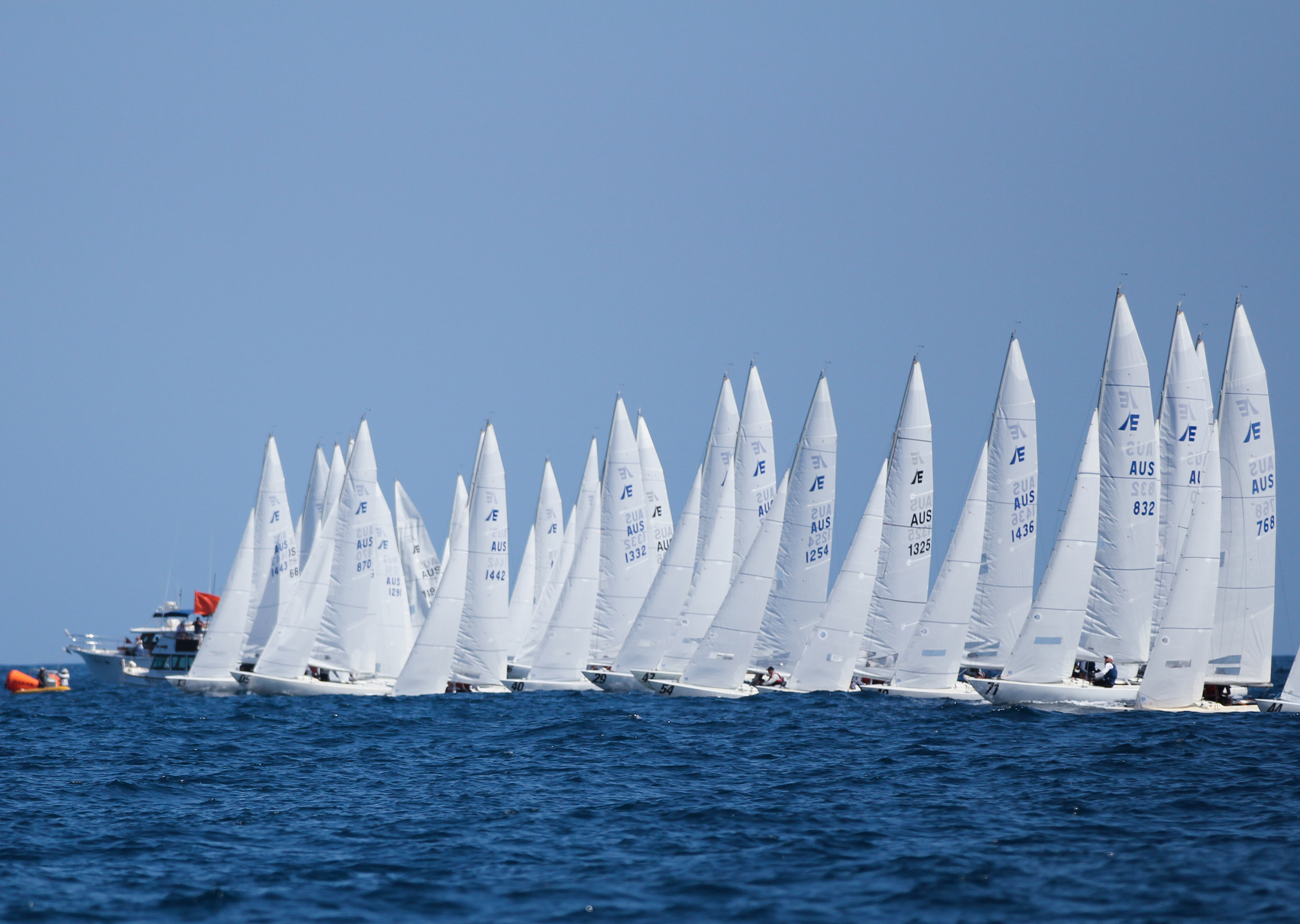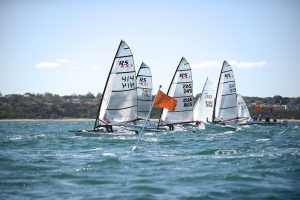

Consistency is the key to starting well and having a great regatta.
This article is written by highly accomplished international sailing coach and good mate Adrian Finglas.
Many regattas are won and lost in the final few seconds before a start. This is due to high risk moves, teams that are on edge and worried about others and not their team.
Clear communication
This is critical during the start process to make sure all team members are aware of the strategy for the start. I am a big believer the starting process must be repeatable and low risk so you get an outcome that gets you going in the race.
How many times have we seen teams battling it out for a high-risk end of a start line. They slightly miss judge the timing and are left head to wind?
I have found, especially in keel boats; the port approach gives you consistency and is relatively low risk especially in big fleets.
When you approach the start line on port you can see the whole fleet as well as the gaps and density of boats is clear. We are always trying to start in the low density areas. This gives you clean air and water as well as less psychological stress.
High density areas are full of the risk takers and the screamers calling all the rules and regulations adding unnecessarily to your stress.
FREE CHAMPIONSHIP SAILING GLOVES
The beauty of the Port approach
You can see the gaps and opportunities opening as you sail up the line from the pin end. Depending on fleet size and experience you should be on port with 2 minutes to go.
During the sail up on port, keep a close eye out on the second row o starboard tackers.
As you sail up the line the key is to look for a big enough gap to tack into. Often the starboard tack boats are luffed up and going slow. In this case it’s easy to judge a nice slow tack in below a starboard tacker.
As you are approaching a starboard tack boat it’s important you aim towards the middle of their boat. If you aim at their bow then tack, you will be bow forward and risk being over the line.
The game is to tack under as close to the starboard boat as possible then match their progression forward. If they accelerate, you do the same, just keeping your bow slightly forward.
The art after you are on starboard, and inside the last 30 seconds, is to slow the boat above you by luffing. If you can slow their progression at 20 seconds with a hard luff this is a key defensive move.
Once the weather boat has slowed and you are inside 20 seconds, you can now concentrate on getting your bow down. Accelerating towards the line leaving them luffed and slow.
Starting consistently
is a real art which requires you to remain alert to your opponent’s moves. I always say, “starting is like boxing – if you stand flat footed you will get hit”.
To get a good start you must move your eyes to watch all the small attack and defend moves. Lining up on port gives you the ability to watch the fleet and look for holes on the start line.

